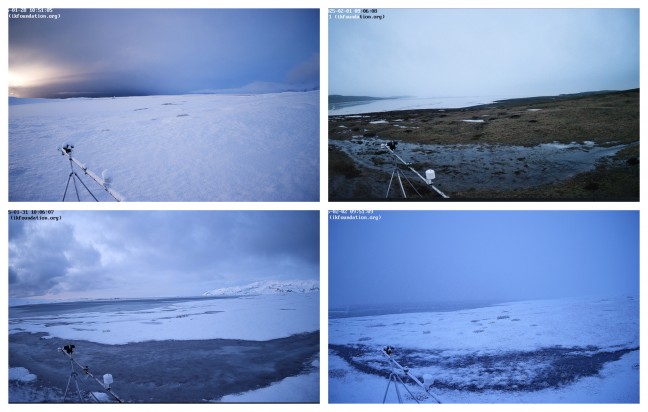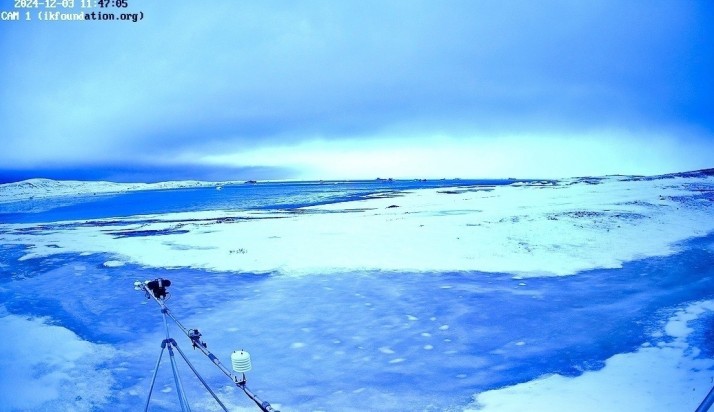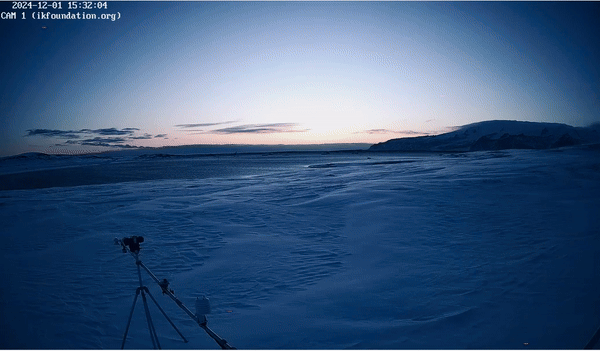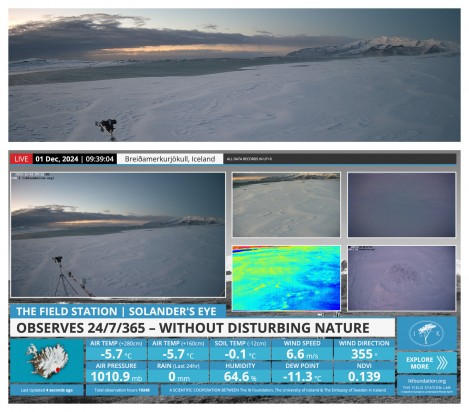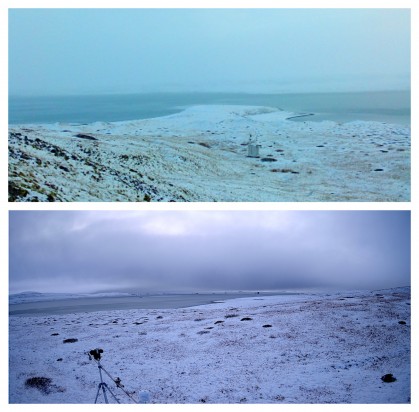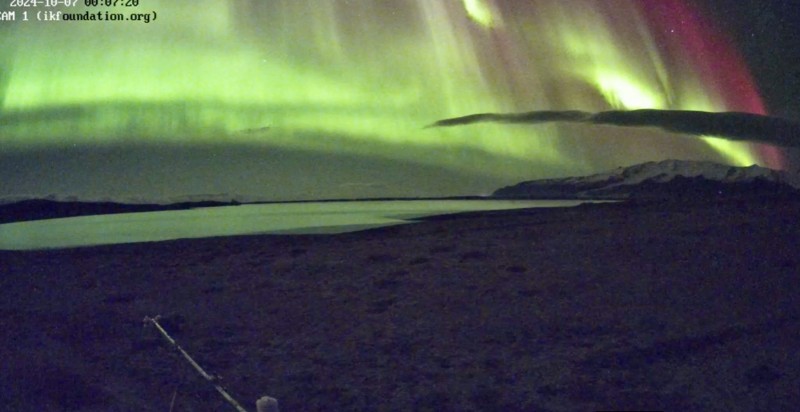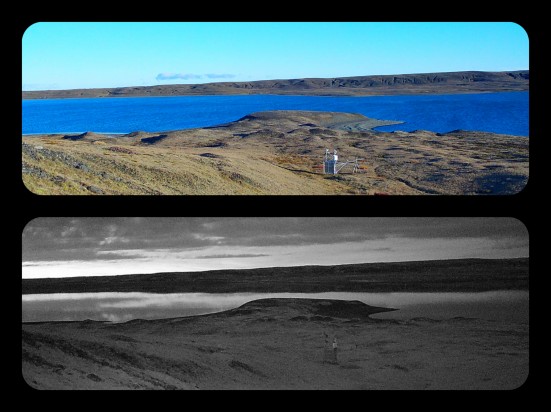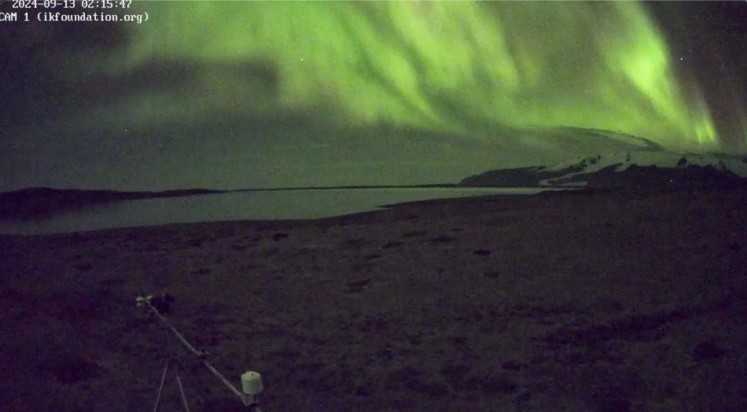ikfoundation.org
The IK Foundation
Promoting Natural & Cultural History
Since 1988





The BRIDGE BUILDER EXPEDITIONS are the overarching definition for a series of contemporary and scientifically sustainable projects established by The IK Foundation, an undertaking which aims to inspire and contribute to an understanding of our shared planet! These projects are grounded in the concepts of retracing and lifting both practical and theoretical knowledge from the Linnaeus Apostles' journeys. The core of said projects revolve around a series of expeditions – with fieldwork in both rural and urban landscapes – which will be used to collect data and knowledge from several of the world's continents. This work incorporates a look into both cultural and societal values of specific regions as well as the measuring of the natural permutations of the landscapes travelled three centuries ago and if they have shifted with the passing of time. In essence the BRIDGE BUILDER EXPEDITIONS are a mixture of 18th century knowledge and 21st century know-how, two contrasting entities employed in unison to create an endeavour which is interdisciplinary but also groundbreaking within its field. These contemporary expeditions offer insight into the developments and constants of the world we live in, divergences which lay the groundwork for new avenues of knowledge.
In 2022, it is 250 years since the Swedish botanist and Linnaeus apostle Daniel Solander made a scientific expedition to Iceland. To commemorate the expedition the Embassy of Sweden in Iceland, together with Icelandic partners, has initiated one of the most comprehensive Swedish-Icelandic projects ever. The project invites Iceland to reflect on our common past, present and future. It extends over two years and involves more than 40 Icelandic partners in some 30 locations all over Iceland. The project is interdisciplinary and forward-looking, bringing art and science in conversation while exploring the Anthropocene. It furthers highlights the Nordic identity and promotes a Pacific-Arctic dialogue.
The Icelandic voyage set out from Gravesend in England on 12 July 1772, almost exactly a year to the day after Daniel Solander and Joseph Banks had returned from James Cook’s first voyage. Another Swede on the voyage was Uno von Troil, who came to accompany the twelve-man crew – primarily invited due to his interest in the Icelandic language. The ship rounded Dover and sailed towards the Isle of Wight, Plymouth, Cape Cornwall and northwards to Scotland, where local people were visited and botanical excursions undertaken. Not until 16 August did the ship head further north for Iceland and twelve days later reached its destination. The group stayed for six weeks on the island, where most of the time was devoted to Hafnarfjörður, botanical and geological fieldwork and visits to the volcano Hekla.
- in Vatnajökull National Park
The IK Foundation, The University of Iceland and The Embassy of Sweden in Iceland are working together to establish an autonomous research station, The Field Station | Naturae Observatio | Solander’s Eye, on Breiðamerkursandur, more specifically on Jökulnes.
The Field Station provides the opportunity to monitor the landscape biosphere, such as wildlife, weather, vegetation, atmosphere and more, without human intervention in a remote area for up to one year.
Jökulnes has most of the characteristics of uninhabited wilderness, as there are little or no traces of traffic or other human activities there. A large part of the area was covered by a glacier in 1998 and, therefore, part of the glacial cap of Vatnajökull, one of the defined Wilderness of Vatnajökull National Park, when the national park was established. In 2019, Vatnajökull National Park was inscribed on the UNESCO World Heritage List.
This Field Station aims to continue the work which Daniel Solander started in 1772 – in a spirit of scientific curiosity and support for ecological sustainability, and in fact, collect millions of scientific data to understand this unique part of Planet Earth.

 Micro.blog
Micro.blog
The final batch of 250 hand-bound, numbered books is now ready to order! SPITSBERGEN SCIENCE EXPEDITIONS | 446 pp. with in-depth details, including text sections, maps, diagrams, pictures, artworks, timelines, and large fold-outs.
TAGS > Arctic | Earth Science | Fieldwork | Expeditions …

8 days left in our crowdfunding campaign, over 50% funded. Our goal: launch Field Station concept v.3. Join us in transforming how we observe nature.

Three years of successful observations with Field Station Solander’s Eye in Vatnajokull National Park in Iceland have now concluded. Read more in iMESSENGER ”Ice, observations … ”
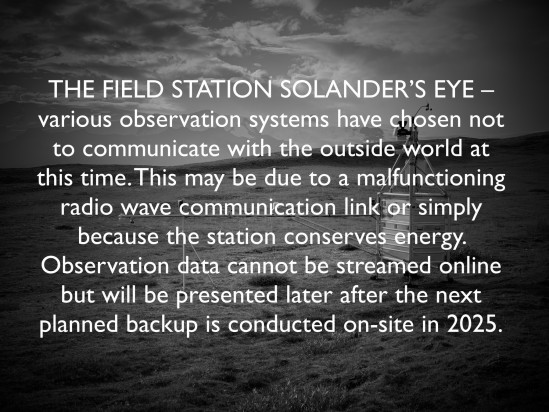
STATUS MESSAGE | THE FIELD STATION SOLANDER’S EYE – we invite you to explore the project site for further information!
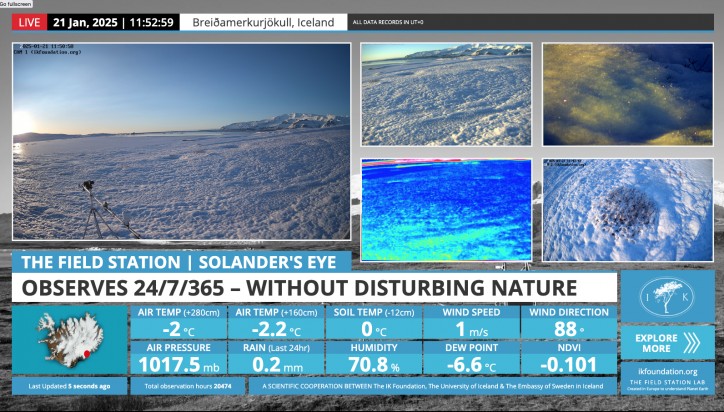
THE FIELD STATION SOLANDER’S EYE | Breiðamerkurjökull | Vatnajøkull | It’s truly a stunning day at the Glacier Lagoon in Iceland! Live Pictures & Data > www.ikfoundation.org/fieldstat…
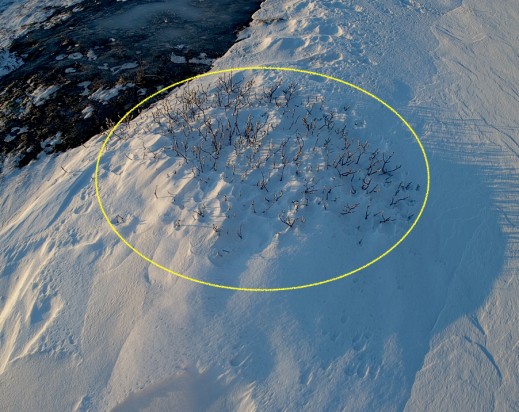
THE FIELD STATION SOLANDER’S EYE | Breiðamerkurjökull | Vatnajøkull | The soil temperature (-12 cm) under this snow-covered Salix shrub is currently -5°C, almost twice as cold as the air temperature. > www.ikfoundation.org/fieldstat…
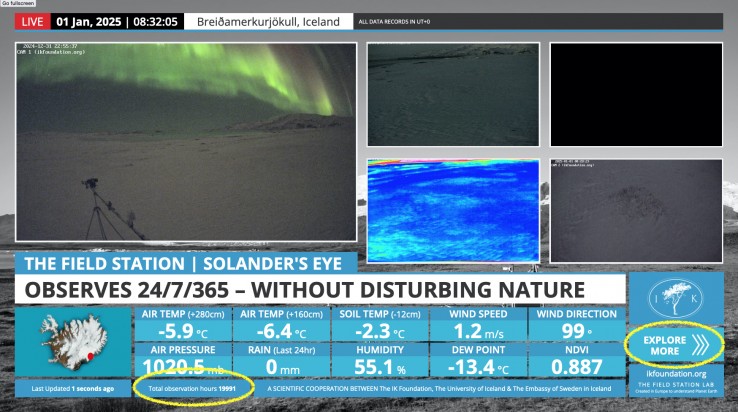
THE FIELD STATION SOLANDER’S EYE | Breiðamerkurjökull | Vatnajøkull | Today, we will surpass 20,000 observation hours and terabytes of scientific data. Click the “Explore More” button to learn more about the rhythm of nature.
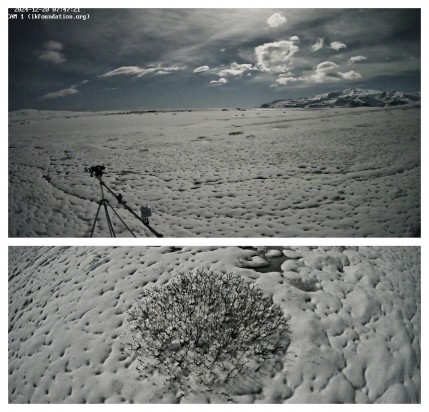
THE FIELD STATION SOLANDER’S EYE | Breiðamerkurjökull | Vatnajøkull | Iceland. Fresh, wet, and compacted snow blanketed the landscape overnight. Pioneer flora of the young landscape faces challenges – this shrub has been documented since 2022. www.ikfoundation.org/fieldstat…
PODCAST | A massive undertaking...
Solander’s Eye

An early Monday morning on September 11, 2023, at the small jetty in the Glacier Lagoon on the edge of Breiðamerkurjökull, Iceland. A group of new researchers from the United States were visiting with Þorvarður Árnason from the Hornafjordur Research Centre at the University of Iceland. They spent time at the Field Station Solander’s Eye with The IK Foundation’s group from the Field Station Lab, which was conducting the annual check-up of the field station.
PODCAST | A massive undertaking...
SOLANDER’S EYE
One of the researchers, Konstantine Vlasis, a composer and Scholar of ecological Sound from New York, has in this podcast made a kind of "memo reportage" to understand all the possibilities with Solander’s Eye. In a conversation with Jeff Snoxell, the project’s digital specialist, we get unique insights into what Konstantine realises is a “massive undertaking”.

Students enrolled in the new international research Master’s program on Islands and Sustainability, known as ISLANDS, have been granted an exciting opportunity to join the research team at The Field Station Solander’s Eye in Iceland.
ISLANDS is a collaborative ERASMUS Mundus joint program offered by the University of Groningen in conjunction with three island-based universities: the University of the Aegean, the University of Iceland, and the University of Las Palmas de Gran Canaria. This program, co-funded by the European Union, primarily focuses on developing knowledge about island-specific characteristics and the tools, skills, and technology required to bridge the gap between theoretical understanding and practical implementation in sustainability.
The inclusion of Solander’s Eye Field Station, based in Iceland, as a case study presents an ideal opportunity for students to engage in hands-on activities that foster the development of multidisciplinary research skills. The activities associated with Solander’s Eye are incorporated into a unique component of ISLANDS, the “Individual Research Training” course at the University of Iceland. In this course, students receive individual supervision from experienced academic staff members, enabling them to cultivate specialised research abilities within a highly personalised setting. The diverse range of environmental and social science-related topics covered by the field station facilitates the exploration of individual interests while also providing insights from other disciplines, thanks to the collaboration of a cross-disciplinary group at the university.
The Field Station offers an invaluable opportunity to observe the natural landscape in an undisturbed remote location, including wildlife, weather patterns, vegetation, atmosphere, and more. As data collection at the station commenced in autumn 2022, participating students had the privilege of delving into the first six months’ worth of collected data, discussing its significance across various disciplines. This allowed them to formulate pertinent research inquiries that leverage the ongoing data collection process and contribute to a deeper understanding of the human impact on this relatively untouched and remote corner of our planet. Such insights are crucial for fostering public awareness of environmental changes in the era of humanity.
During the spring semester of this year, one student, Yulita Muspitasari,, conducted her Individual research project around Solander’s Eye. Through her project, she gained valuable knowledge spanning glaciology, geomorphology, ecology, and geography. Yulita skillfully utilised this interdisciplinary perspective to assess the potential of field stations in enhancing fieldwork experiences at both secondary and higher education levels. The outcomes of her work include a draft paper currently being refined for submission to an academic journal. This paper, one of the pioneering research outputs emerging from the Field Station, features a series of data visualisations and explores innovative approaches to complement and expand actual field experiences within educational settings. The intention is to submit this paper for scientific peer review during the upcoming summer.
Benjamin Hennig
The BRIDGE BUILDER EXPEDITIONS are presented in detail on their dedicated sites under iPROJECTS within iLINNAEUS. Here anyone interested can receive visual and textual updates from our members in the field, as well as results which said expeditions will create. The results themselves will be accessible via iLINNAEUS under the Creative Commons licences which we operate within, as well as in printed articles and publications. Interested individuals and organisations with local knowledge within the geographical and subject areas which the expeditions will encompass are welcome to get in touch with the IK Foundation. What is today denoted as Crowd Science was something the Linnaeus Apostles had great adherence to. We are especially interested in reaching out to projects which have used or use modern interpretations of the Apostles' work in their own studies and research!

Pär Ahlberger
- (b.) 1962
- DUTY: Participant, project leader of Solander250.
- AIM: Initiated the Solander 250 – Bréf frá Íslandi project to commemorate a scientific expedition to Iceland in 1772 by Daniel Solander, Uno von Troil and Joseph Banks. Interconnect projects, people and knowledge for a better understanding of Natural & Cultural History.
- EXPLORE MORE: An Apostle of Daniel Solander', iLINNAEUS | iMagazine | iStories
- POST: Ambassador of Sweden to Iceland, Sweden/Iceland.

Þorvarður Árnason
- (b.) 1960
- DUTY: Participant, researcher.
- AIM: Documenting the wild nature of the study area, especially through the use of visual recording devices (cameras). Observing and analysing seasonal changes in the different natural features and characteristics on location. Monitoring Aurora borealis activity. Participating in a novel interdisciplinary research project. Participating in outreach activities based on the Field Station´s data and findings.
- EXPLORE MORE: Research Centre Hornafjörður
- POST: Director of the University of Iceland´s Hornafjordur Research Centre. Associate research professor of integrated environmental humanities. Environmental filmmaker and photographer. Höfn, Iceland.

Kieran Baxter
- (b.) 1989
- DUTY: Videographer & visualization specialist.
- AIM: Science communication and outreach.
- EXPLORE MORE: ClimateVis.
- POST: Research specialist, University of Iceland, Iceland.

Lars Buxbom
- (b.) 1966
- DUTY: Participant, Field Assistant/Technician.
- AIM: My Aim is to assist with documentation and maintenance of the Field Station. I hope that my skills in trouble-shooting can be useful during the field survey. It will be a great opportunity to participate on a journey to Iceland.
- POST: Electrical engineer, Roskilde, Denmark.

Tom Chicken
- (b.) 1983
- DUTY: Participant. Install and Commission fuel cell power system.
- AIM: To establish a reliable power supply for the Field Station.
- EXPLORE MORE: Fuel Cell Installation in the Arctic
- POST: Technical director (CTO), Hungerford, England.

Clinton Cook
- (b.) 1976
- DUTY: Participant, researcher.
- AIM: Examining qualities of Wilderness character in the region and monitoring change over time.
- EXPLORE MORE: n/a.
- POST: Postgraduate student at Háskóli Íslands, Iceland.

Will Clemens
- (b.) 1984
- DUTY: Participant, field assistant and audio expert.
- AIM: Convey the importance of conservation of the wilderness through the medium of audio.
- EXPLORE MORE: FROM CITY LIFE TO THE WILD a journey in pictures and music
- POST: Composer, London, England.

Garrison Gerard
- (b.) 1994
- DUTY: Participant, researcher.
- AIM: Acoustic Ecological Monitoring and Soundscape Study.
- EXPLORE MORE: Acoustic Ecology and Music Composition.
- POST: Fulbright Researcher, University of North Texas, the US.

Snævarr Guðmundsson
- (b.) 1963
- DUTY: Participant, researcher.
- AIM: Monitoring and documenting geomorphological and glacier changes in the region.
- EXPLORE MORE: South East Iceland Nature Research Center (Náttúrustofa Suðausturlands)
- POST: Division manager and geography/glaciology researcher, Southeast Iceland Nature Research Center, Iceland.

Lars Hansen
- (b.) 1960
- DUTY: Participant, project leader for the Field Station project Field Station | Naturae Observatio | Solander’s Eye, researcher.
- AIM: To strengthen our insight of the fieldwork that the so-called Linnaeus Apostles started almost three centuries ago. To understand Natural and Cultural History of Planet Earth – and hopefully building "new bridges of proficiency" between the past, present and future! The Field Station project is an important part of this work – an enterprise – to combine classical fieldwork with the technical opportunities of the future.
- EXPLORE MORE: Field Station
- POST: Head at The IK Foundation, London, England.

Viveka Hansen
- (b.) 1962
- DUTY: Participant, researcher, writer, back base assistant.
- AIM: My aim is to get an increased understanding of natural history travels via the Arctic seafaring routes and Iceland, with a focus on documentation of personal belongings and textiles in the 18th century.
- EXPLORE MORE: iTextilis
- POST: Textile Historian. The IK Foundation, London, England.

Benjamin Hennig
- (b.) 1978
- DUTY: Participant, researcher.
- AIM: My main research interests evolve around methods of geographic data analysis and visualisation. Therefore, my key interest includes the utilisation of data from the Solander’s Eye field station to provide insights into humanity’s impact on a location that can be described as a relatively untouched and remote spot of this planet. This will help to increase an awareness for questions around sustainability through the development of concepts for analysing, visualising and mapping these issues from the multifaceted data that is being collected. I see a great potential in the data from the field station to provide unique insights into an area that is considerably vulnerable to the impacts of global environmental change. This is not least valuable for a better public understanding of changing environments in the age of humankind and as a result highly beneficial for science communication.
- EXPLORE MORE: Research group
- POST: Professor of Geography at the University of Iceland's Faculty of Life and Environmental Sciences. Reykjavik, Iceland.

Sigurbjörg Hjörleifsdóttir
- (b.) 1981
- DUTY: Participant, back base assistant.
- AIM: Assisting in the implementation of projects between the various actors and assisting with local knowledge.
- EXPLORE MORE: Solander 250
- POST: Promotion officer at the Embassy of Sweden in Reykjavik, Iceland.

Ingibjörg Svala Jónsdóttir
- (b.) 1955
- DUTY: Participant, researcher.
- AIM: To document the biodiversity and seasonal change (phenology) of an ecosystem at a 50 year old glacier foreland wilderness area, impacted by climate change and fast changing physical environment as well as increasing threats of human activities, particularly tourism.
- EXPLORE MORE: Tundra ecology
- POST: Professor of Ecology, Faculty of Life- and Environmental Sciences, University of Iceland, Iceland.

Henry Mills
- (b.) 1991
- DUTY: Participant. Assisting with the fuel cell power supply design and installation.
- AIM: To provide reliable power to the Field Station equipment. The application requires that the power supply endures the harsh climates and provides the autonomy required over three hundred of days without maintenance.
- EXPLORE MORE: Fuel Cell Installation in the Arctic
- POST: Technician/Sales manager, Hungerford, England.

Yulita Muspitasari
- (b.) 1995
- DUTY: Master student.
- AIM: The research project aims to explore the question of how field stations can be used to complement and augment fieldwork and field experiences in the context of STEM & higher education as well as science outreach activities. I am also interested in exploring how the data collected from the field station can be utilized for further research in various disciplines.
- EXPLORE MORE: Islands and Sustainability
- POST: Research Master Student on Islands and Sustainability, University of Iceland and University of Groningen, The Netherlands.

Finnur Pálsson
- (b.) 1956
- DUTY: Participant, researcher.
- AIM: Glacilogical research; surface energy balance; calving in Jökulsárlón.
- EXPLORE MORE: Institute of Earth Sciences
- POST: Project Manager in Glaciology, Institute of Earth Sciences, University of Iceland, Iceland.

Adam Proctor
- (b.) 1972
- DUTY: Participant, Videographer.
- AIM: Documenting the Field Station installation and the surrounding landscape.
- EXPLORE MORE: Fortsunlight
- POST: Freelance video producer and motion designer based in Fife, Scotland.

Graham Scott
- (b.) 1964
- DUTY: Participant at a distance. Graphic Design / UI Design.
- AIM: Present the research information from the project both in print and online.
- EXPLORE MORE: Human Design
- POST: Graphic Designer in Hull, England.

Jeff Snoxell
- (b.) 1971
- DUTY: Participant, technical expert, webmaster.
- AIM: Ensure the Field Station components are correctly configured, connected and fully operational.
- EXPLORE MORE: Expedition to Svalbard with The IK Foundation
- POST: Hardware and software specialist, Robin Hoods Bay, England.

Sæunn Stefánsdóttir
- (b.) 1978
- DUTY: Participant, administrator.
- AIM: Documenting the wild nature of the study area, especially through the use of visual recording devices (cameras). Observing and analysing seasonal changes in the different natural features and characteristics on location. Monitoring Aurora borealis activity. Participating in a novel interdisciplinary research project. Participating in outreach activities based on the Field Station´s data and findings.
- EXPLORE MORE: The University of Iceland's Institute of Research Centres
- POST: Director of the University of Iceland´s Institute of Research Centres, Iceland.

Pwint Mon Swe (Jacqueline)
- (b.) 2002
- DUTY: Participant, Master Student.
- AIM: The research project aims to explore the understanding of how environmental factors, including weather conditions (jökulhlaups and glacier dynamics), influence the flooding events in ice caves within Breiðamerkurjökull during the winter periods, and further implications for the ice cave tourism sector within the region. The Field Station | Solander's Eye provides data that can be used to further explore and interpret the occurrence of flooding events within the ice caves.
- EXPLORE MORE: ISLANDS Erasmus Mundus Research
- POST: Research Master Student on Islands and Sustainability, University of Iceland and University of Groningen, The Netherlands.

Konstantine Vlasis
- (b.) 1991
- DUTY: Participant, researcher.
- AIM: Ethnographic study of audio data and listening practices.
- EXPLORE MORE: www.konvlasis.com
- POST: Ethnographer and composer, PhD Candidate, Music and Sound Studies, New York University, the US.

Alice Watterson
- (b.) 1987
- DUTY: Participant, Researcher, Artist.
- AIM: Public outreach and science communication (connection to the FS Solander's Eye project).
- EXPLORE MORE: www.alicewatterson.co.uk
- POST: Research specialist, University of Iceland, Iceland.

Peter Wiberg
- (b.) 2004
- DUTY: Participant. Field assistant.
- AIM: Following in my father's footsteps, Søren Wiberg, I am here to support the Field Station’s setup, maintenance, and enhancement. I am committed to ensuring its smooth operation, addressing challenges in real time, and working closely with the entire team to achieve the project's goals.
- EXPLORE MORE: Field Station | Naturae Observatio for external projects and organisations .
- POST: Assist in fieldwork as an intern, gaining hands-on experience in Field Station maintenance and operations. AluBox, Sorø, Denmark.

Søren Wiberg
- (b.) 1972
- DUTY: Participant. Field assistant/Technician.
- AIM: My essential contribution to the project is to design and build the hard ware to the Field Station.
- EXPLORE MORE: Field Station | Naturae Observatio for external projects and organisations.
- POST: Forestry and Landscape engineer, founder and owner of the family company AluBox in Sorø, Denmark.

Carl Wredling
- (b.) 1997
- DUTY: Participant, back base assistant.
- AIM: Assisting in the implementation of projects between the various organisations.
- EXPLORE MORE: Solander 250
- POST: Promotion intern at the Embassy of Sweden in Reykjavik, Iceland.
iPROJECTS
- (Main title) The Linnaeus Apostles BRIDGE BUILDER EXPEDITIONS To Understand Planet Earth
- (Subtitle) BRIDGE BUILDER EXPEDITIONS - Vatnajökull National Park, Iceland
- FIELD STATION | NATURAE OBSERVATIO | SOLANDER’S EYE
- Iceland
- Geography
- 18th century Studies'
- Cultural History
- History of Science
- Natural History
- Field Notes, Arts and Photography
- Field station, long-term observations
- Ecology
- The IK Foundation, London England & EU
- The University of Iceland, Reykjavik, Iceland
- The Embassy of Sweden, Reykjavik, Iceland

 Feel welcome to read more about how to take part...
Feel welcome to read more about how to take part...
- 2021: Planning and financing.
- 2022 January - August: Planning, building and testing Field Station hard- & software.
- 2022 September: Activation of Field Station in the field.
- 2022 September - October: Field Station start to observe and collect data from the field.
- 2022 13-16 October: Live streaming on The 2022 Arctic Circle Assembly at Harpa Conference Center in Reykjavík, Iceland.
- 2022 - 2023: Observation and data collection from the field.
- 2023 (Spring): Evaluation, planning and decision on continued (2023-2024/2025) collection of observations and data via the Field Station.
- 2023 (September): Annual service and update of the Field Station.
- 2023 September - September 2024: The Field Station observes and collects data from the field, second period (13-24 months).
- 2023 October: Publishing of audio files, from the first observation period (1-12 months). 2024 (Spring): Evaluation, planning and decision on continued (2024-2025) collection of observations and data via the Field Station.
- 2024 (August-September): Annual service and update of the Field Station.
- 2024 - 2025: The Field Station observes and collects data from the field, third period (25+ months).
- 2025: Dismantling the Field Station, reviewing the hardware and software, securing and cataloguing metadata, and handing over all data to Iceland’s university.
- 2025 >: Evaluation of the project and the publication of reports concerning the project and its numerous outcomes in the forthcoming years.
- iLINNAEUS.org
- FIELD STATION PROJECTS within The IK Foundation
- Field Station | Solander´s Eye Picture portfolio


been copied to your clipboard




– a truly European organisation since 1988
Legal issues | Forget me | and much more...
You are welcome to use the information and knowledge from
The IK Workshop Society, as long as you follow a few simple rules.
LEARN MORE & I AGREE


